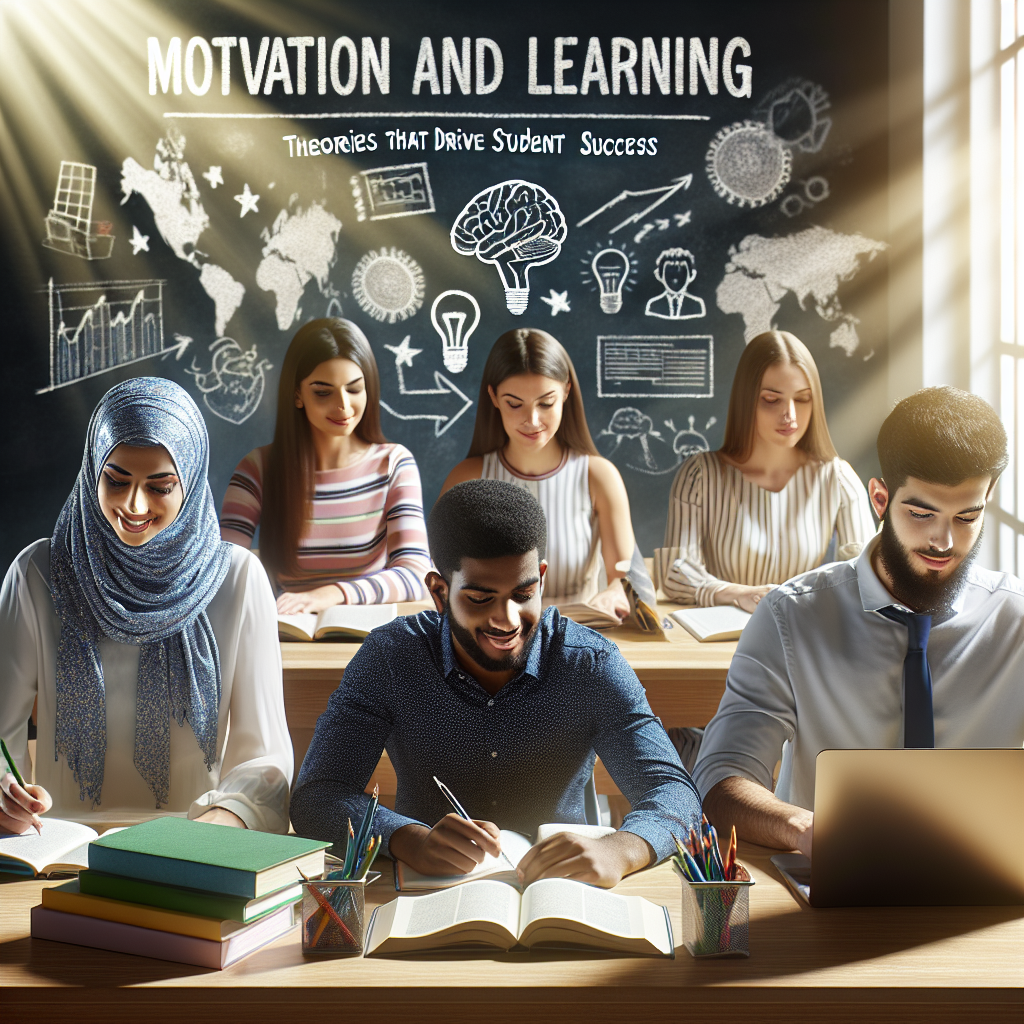Introduction
In today’s fast-paced educational landscape, the quest for lifelong learning is more critical than ever. Students face a myriad of challenges that can impede their academic progress, and it is essential to harness the power of Motivation and Learning: Theories That Drive Student Success. Understanding the intricate relationship between these two vital components allows educators, students, and parents to create an environment conducive to learning and achievement.
Motivation ignites the flame of learning, transforming potential into performance. As we delve into the theories surrounding this dynamic intersection, we will uncover how they can be applied in real-world educational contexts, empowering stakeholders to foster enduring success.
The Role of Motivation in Learning
What Is Motivation?
Motivation can be defined as the driving force behind human behavior—what propels us to take action. In an educational setting, it influences students’ willingness to engage with the material, persevere through challenges, and strive for excellence. Understanding the two main types of motivation, intrinsic and extrinsic, is crucial for optimizing student success.
- Intrinsic Motivation refers to engaging in a task for inherent enjoyment or satisfaction.
- Extrinsic Motivation comes from external rewards such as grades or recognition.
Theories of Motivation
-
Self-Determination Theory (SDT)
- Overview: Proposed by Deci and Ryan, SDT emphasizes the importance of autonomy, competence, and relatedness.
- Application: By nurturing environments where students feel autonomous and competent, educators can enhance intrinsic motivation.
-
Expectancy-Value Theory
- Overview: This theory posits that motivation is influenced by the expectations of success and the value placed on the task.
- Application: Instructors can boost motivation by clarifying the relevance of subjects to real-world applications.
- Goal-Setting Theory
- Overview: Goals serve as motivators for achievement. Specific, measurable, achievable, relevant, and time-bound (SMART) goals enhance performance.
- Application: Educators can work with students to set realistic goals, aligning their learning strategies with desired outcomes.
Case Study: A Real-World Application
Consider a high school employing the Self-Determination Theory by offering students a choice in project topics. This shift not only increased participation but also deepened engagement. Students began producing higher-quality work, proving that motivation significantly enhances learning outcomes.
The Synergy Between Motivation and Learning
Cognitive Development Theories
These theories look at how mental processes influence learning:
-
Constructivism
- Overview: Learners construct their understanding through experiences and interactions.
- Application: By creating collaborative learning environments, students can leverage their intrinsic motivation to explore concepts actively.
- Social Learning Theory
- Overview: Proposed by Bandura, this theory emphasizes learning through observation and imitation.
- Application: Educators should model positive behaviors and attitudes to cultivate a motivated classroom culture.
Learning Theories in Practice
| Theory | Key Concepts | Applications in Classroom |
|---|---|---|
| Constructivism | Active participation, personal experience | Group projects, peer teaching |
| Social Learning Theory | Observation, imitation | Role modeling by teachers, cooperative learning activities |
Case Study: Collaborative Learning
A university department adopted constructivist approaches by integrating group projects into its curriculum. The outcome was remarkable—students reported feeling more motivated and engaged, leading to impressive overall performance increases.
The Impact of Environment on Motivation and Learning
Physical and Psychological Learning Environments
The environment plays a pivotal role in influencing motivation:
-
Positive Learning Environment
- Students thrive in classrooms characterized by respect, encouragement, and support.
- Application: Teachers should foster an inclusive culture to boost students’ motivation and learning capabilities.
- Physical Space
- The layout of the classroom can affect interaction and learning.
- Application: Flexible seating arrangements can promote collaboration and enhance student motivation.
Case Study: Physical Environment
A middle school redesigned its classrooms with flexible seating options. Teachers reported increased student interaction, resulting in improved academic outcomes. By creating a stimulating physical environment, the school successfully boosted motivation and fostered learning.
Strategies to Enhance Motivation and Learning
Practical Techniques for Educators
-
Incorporating Gamification
- Using game-like elements in learning activities can make lessons more engaging and motivating.
- Example: Introducing point systems or competitive quizzes can stir excitement in learning.
-
Offering Constructive Feedback
- Timely and specific feedback nurtures students’ feelings of competence and autonomy.
- Example: Instead of generic comments, focus on strengths and areas for improvement, providing actionable steps.
- Utilizing Technology
- Interactive platforms can enhance motivation through immediate feedback and engaging content.
- Example: Apps that adapt to individual learning paces motivate students by personalizing their educational journey.
Conclusion
As we’ve explored how Motivation and Learning: Theories That Drive Student Success intersect, it becomes clear that fostering a motivated student population is essential for achieving academic excellence. By integrating various motivational theories and practical strategies, educators can cultivate a learning environment that resonates with students, inspiring them to push beyond their limits.
As you embark on your journey to enhance motivation and learning, remember this: motivation is the spark; learning is the flame. The combination can set your educational endeavors aflame, leading to success that lasts a lifetime.
FAQs
1. What are the two types of motivation that impact learning?
Intrinsic motivation (driven by personal satisfaction) and extrinsic motivation (driven by external rewards) significantly affect learning outcomes.
2. How can teachers improve student motivation?
By fostering a positive classroom environment, incorporating student choice, and providing meaningful feedback.
3. What role does goal setting play in motivation?
Setting clear and achievable goals helps enhance focus and determination, leading to increased motivation and performance.
4. How can parents support their children’s motivation?
By encouraging autonomy, celebrating achievements, and showing interest in their academic pursuits.
5. Are there effective strategies to instill intrinsic motivation?
Promoting self-directed learning opportunities, fostering curiosity, and linking lessons to real-world applications can help develop intrinsic motivation.
This comprehensive examination of motivation and learning unveils the importance of understanding the theories that drive student success, empowering educators and students alike to unleash their full potential.

